This paleo, Whole30, and gluten-free spin on bulgogi, a classic Korean grilled beef dish of thinly sliced beef marinated in a sweet and savory sauce, can easily be made at home in a skillet!
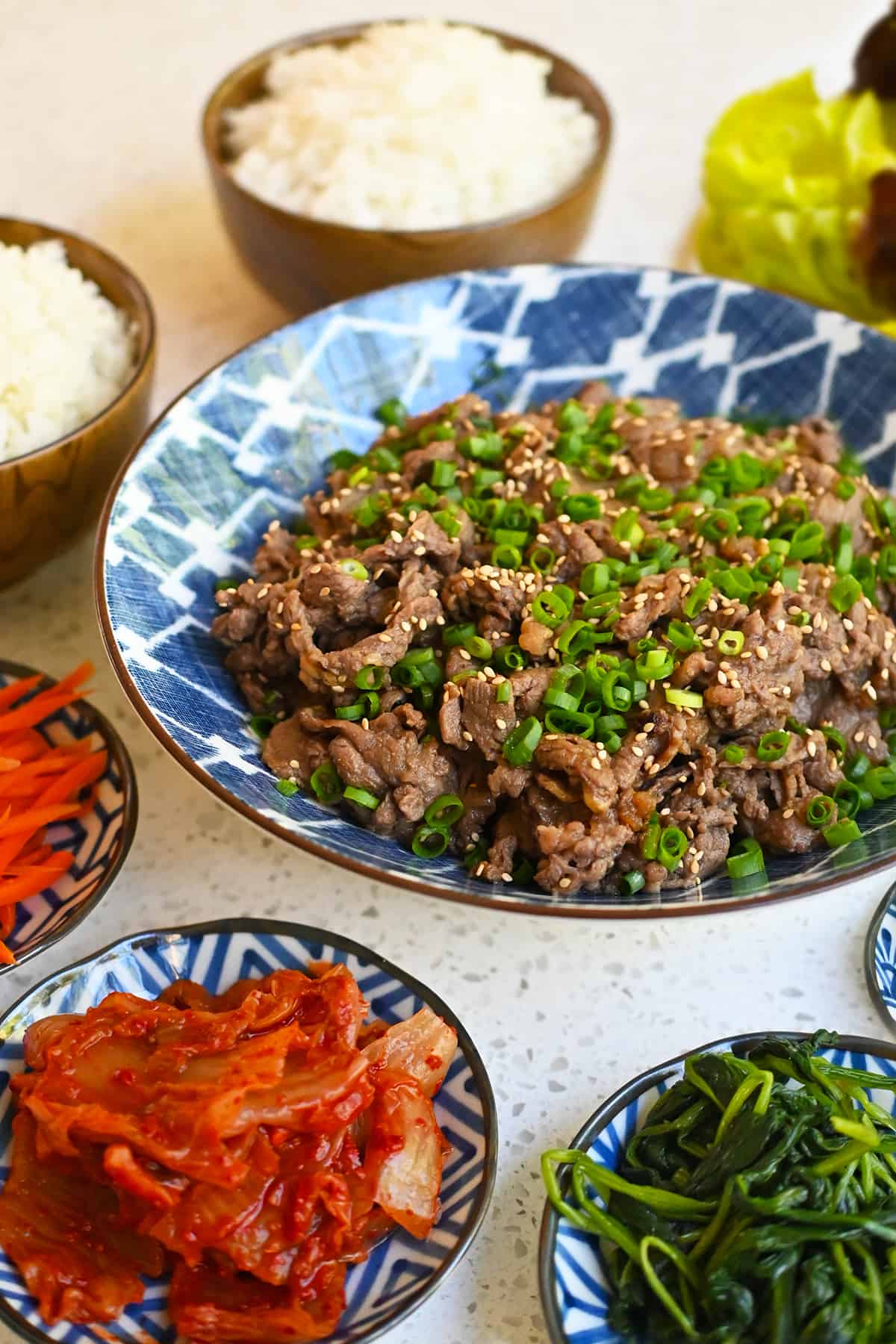
Table of Contents
What is bulgogi?
Bulgogi is a traditional Korean dish consisting of thin slices of beef that are marinated in an umami-packed sauce made of soy sauce, brown sugar, garlic, sesame oil, ginger, and Asian pear and then grilled or pan-fried. The word bulgogi literally translates to “fire meat” in Korean, an apt name for this dish of flame-grilled meat. Bulgogi is typically served with rice, lettuce, kimchi, and other banchan (a.k.a. yummy side dishes). It’s also a popular ingredient for bibimbap, a rice bowl with various toppings
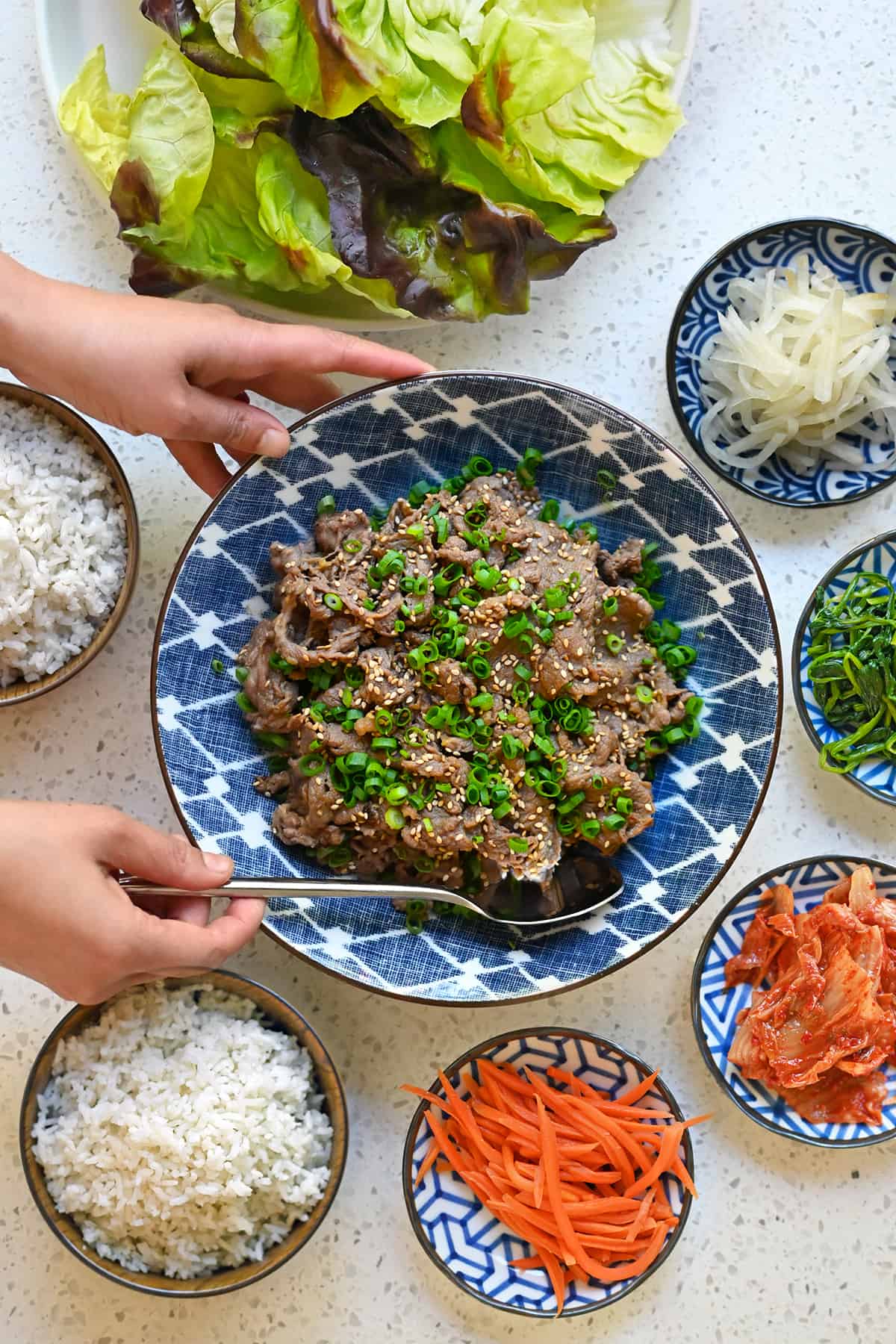
A paleo, gluten free, and Whole30 bulgogi recipe!
I love, love, LOVE Korean BBQ beef but I can rarely eat it when I dine out because my gut can’t tolerate gluten. (PSA: I have ordered great gluten-free Korean food at Yuginong in Portland, OR, and The Woo in NYC). So as with every gluten-full recipe that I love and miss, I put on my thinking cap and came up with a paleo, Whole30, soy-free, and gluten-free version that can be easily made at home!
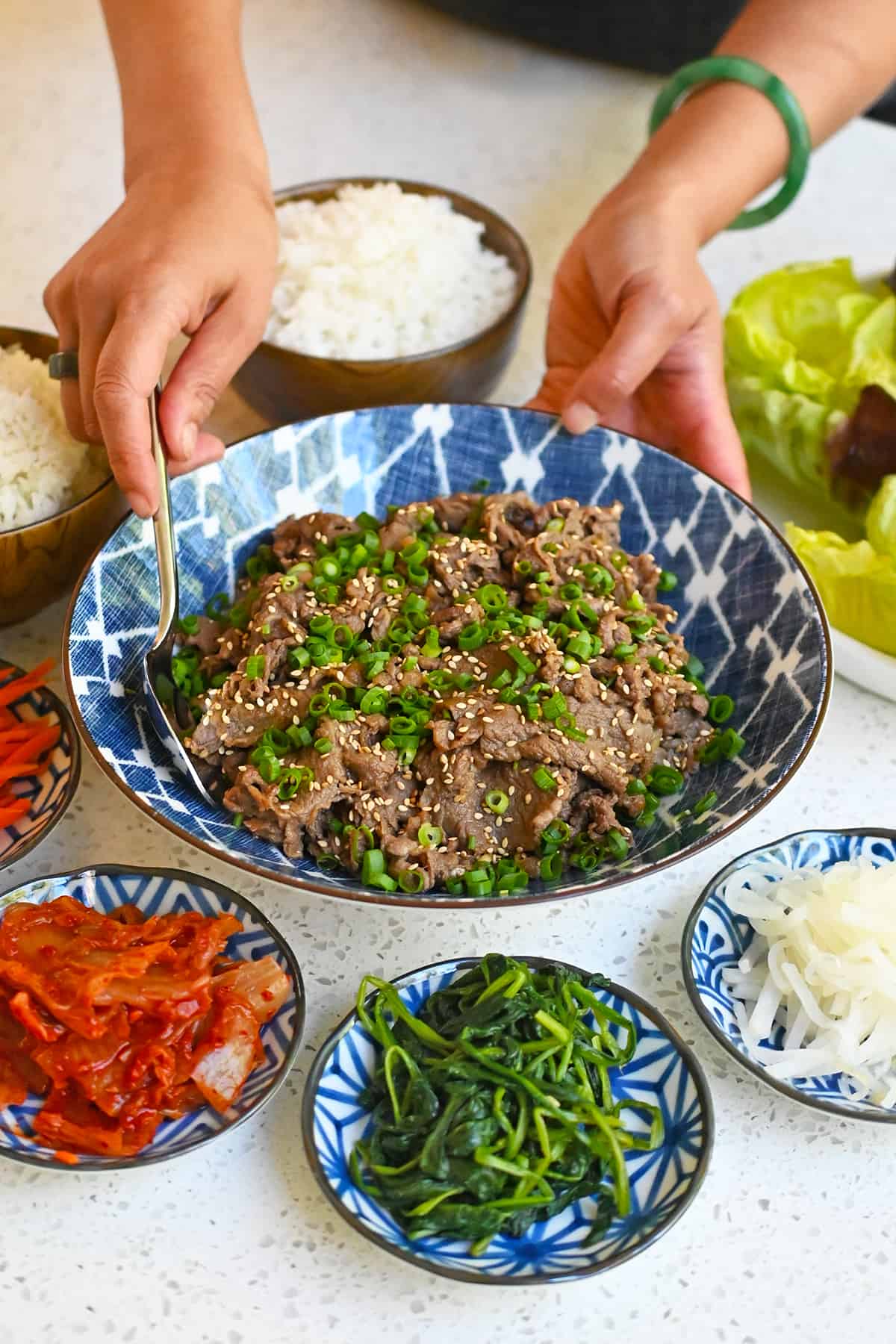
I think you’ll love my riff on bulgogi because it’s dead-simple to prepare with just a few simple ingredients. To keep things Whole30 and low carb, you can serve it over cauliflower rice, in lettuce wraps, or with some kimchi on the side for a delicious and satisfying meal. Trust me: this bulgogi will make you feel like you’re eating at a Korean barbecue restaurant!
Tips for making bulgogi
- Buy pre-sliced beef! Go to your local Korean or Asian market to grab some thinly sliced steak. It’ll make this recipe super fast and easy!
- Blitz the marinade in a high speed blender! My bulgogi sauce is a cinch to make: just dump all the marinade ingredients into a high speed blender or food processor and blitz until smooth. If you don’t have a powerful blender, you can also strain the marinade through a cheese cloth or a fine mesh sieve to remove the chunks.
- Use a large skillet! The larger the skillet, the more surface area to cook the beef! Although many recipes recommend a cast iron grill pan, I’ve found them to be tough to clean afterwards. I recommend using a stainless steel pan, cast iron skillet, carbon steel pan, or large griddle instead.
- Cook in batches! You don’t want to steam the beef, so make sure you cook it in a single layer in separate batches. Each batch only takes a few minutes so dinner will still be ready in a hurry!
Ingredients
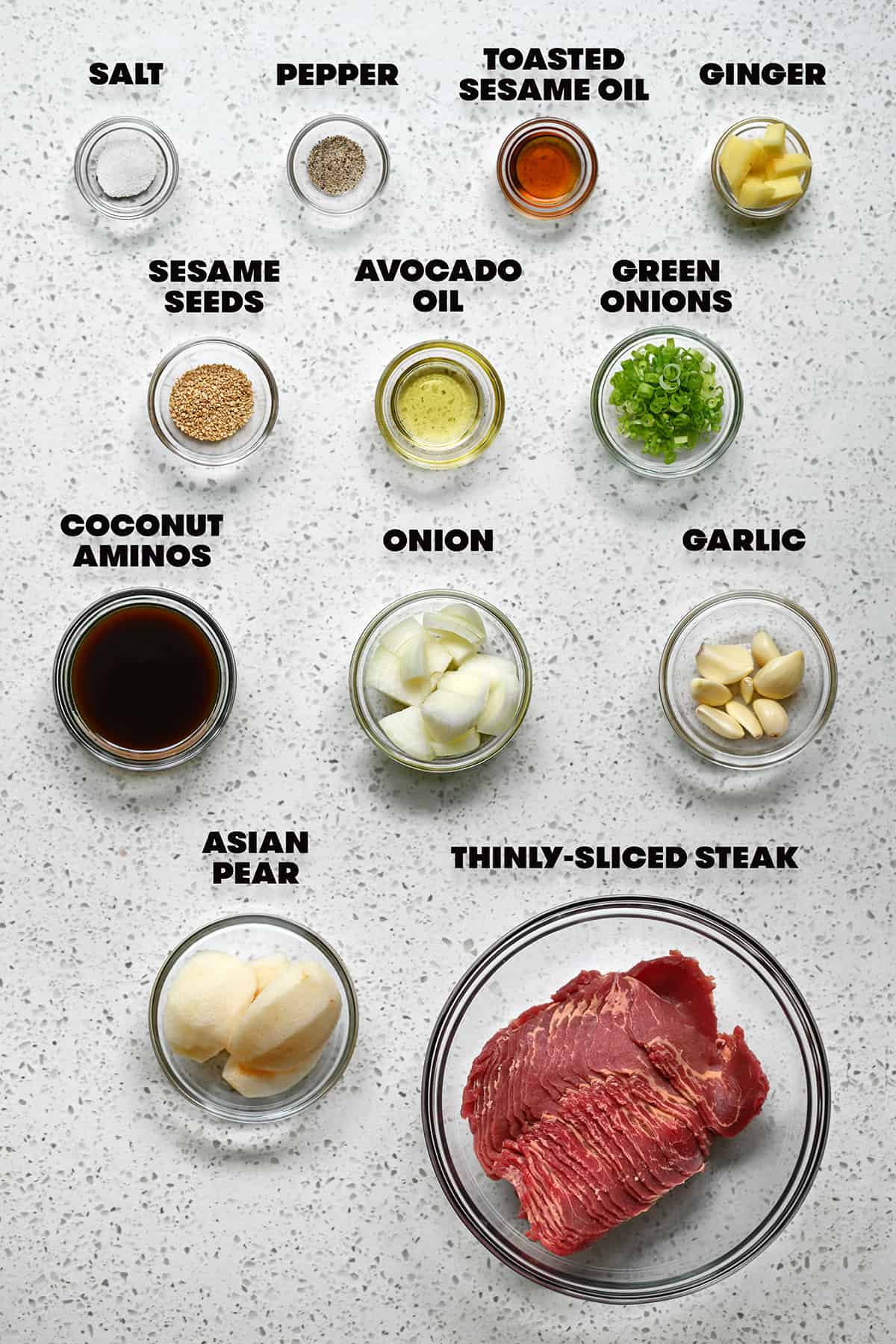
- Thinly sliced steak: I normally cheat and buy pre-sliced bulgogi beef at a Korean market. I’ve also used the shaved beef at Trader Joe’s but it cooks much faster because it’s so thin. If you can’t find good quality sliced beef, feel free to slice your own! Common cuts of beef for this recipe include ribeye, tenderloin, sirloin, or flank steak. Just freeze the meat for about 15 minutes and slice it thinly against the grain.
- Asian pear: Adds a natural sweetness to the marinade. Plus, pears contains an enzyme (a.k.a. calpain) that helps tenderize the meat. Can’t find an Asian pear? You can use a regular pear or even a kiwi. Fuji apple is also a fine option.
- Onion
- Garlic cloves
- Fresh ginger: Adds flavor and also contains an enzyme that makes the beef tender.
- Coconut aminos: My favorite soy sauce replacement. It’s sweeter than soy sauce so I always like to add some salt to balance the flavor.
- Toasted sesame oil
- Diamond Crystal brand kosher salt
- Freshly cracked black pepper
- Avocado oil
- Toasted sesame seeds
- Scallions (green onions)
How to make paleo bulgogi
Make the marinade
In a high speed blender, add the Asian pear, chopped onion, garlic, ginger, coconut aminos, Diamond Crystal kosher salt, and black pepper.
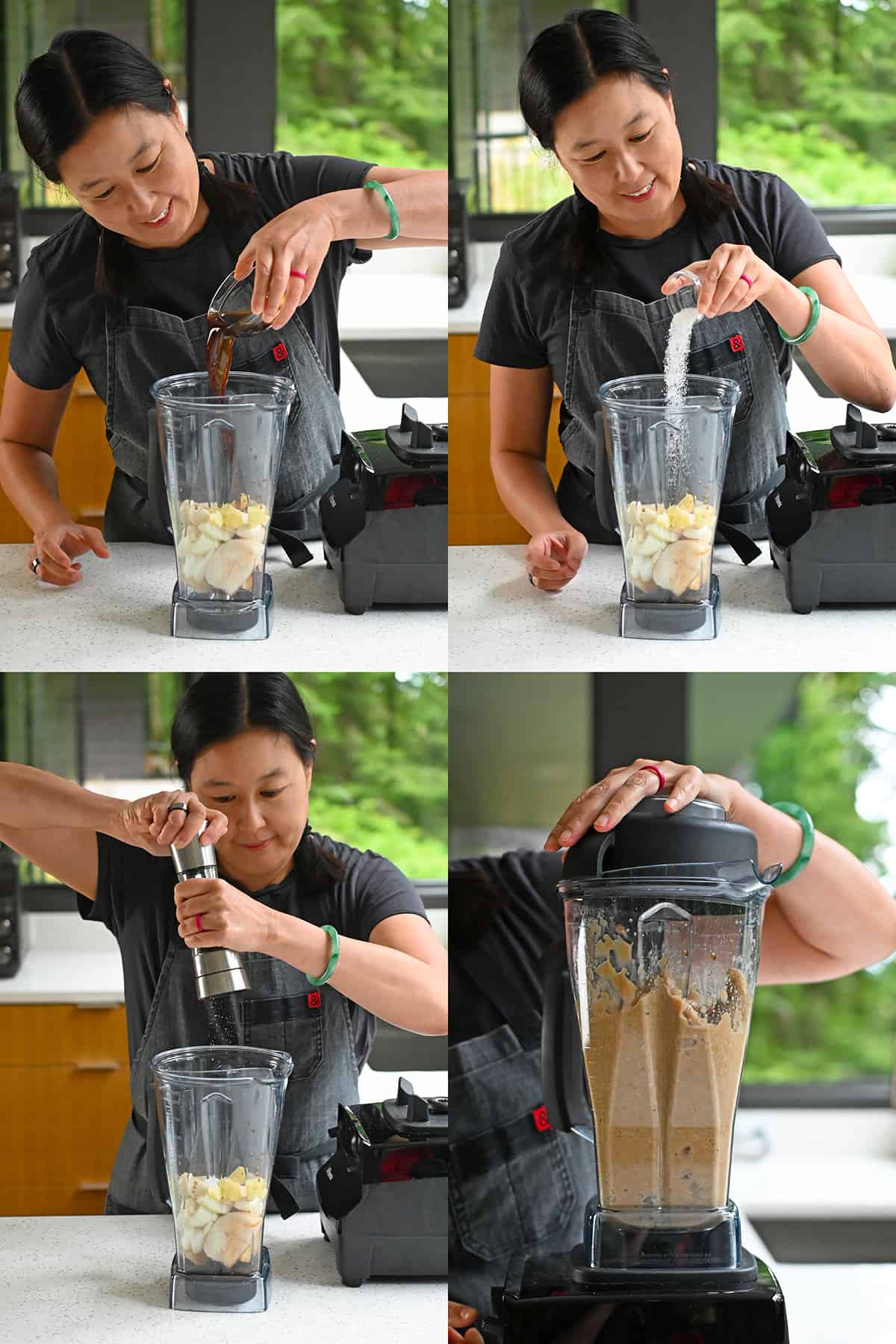
Blitz until smooth.
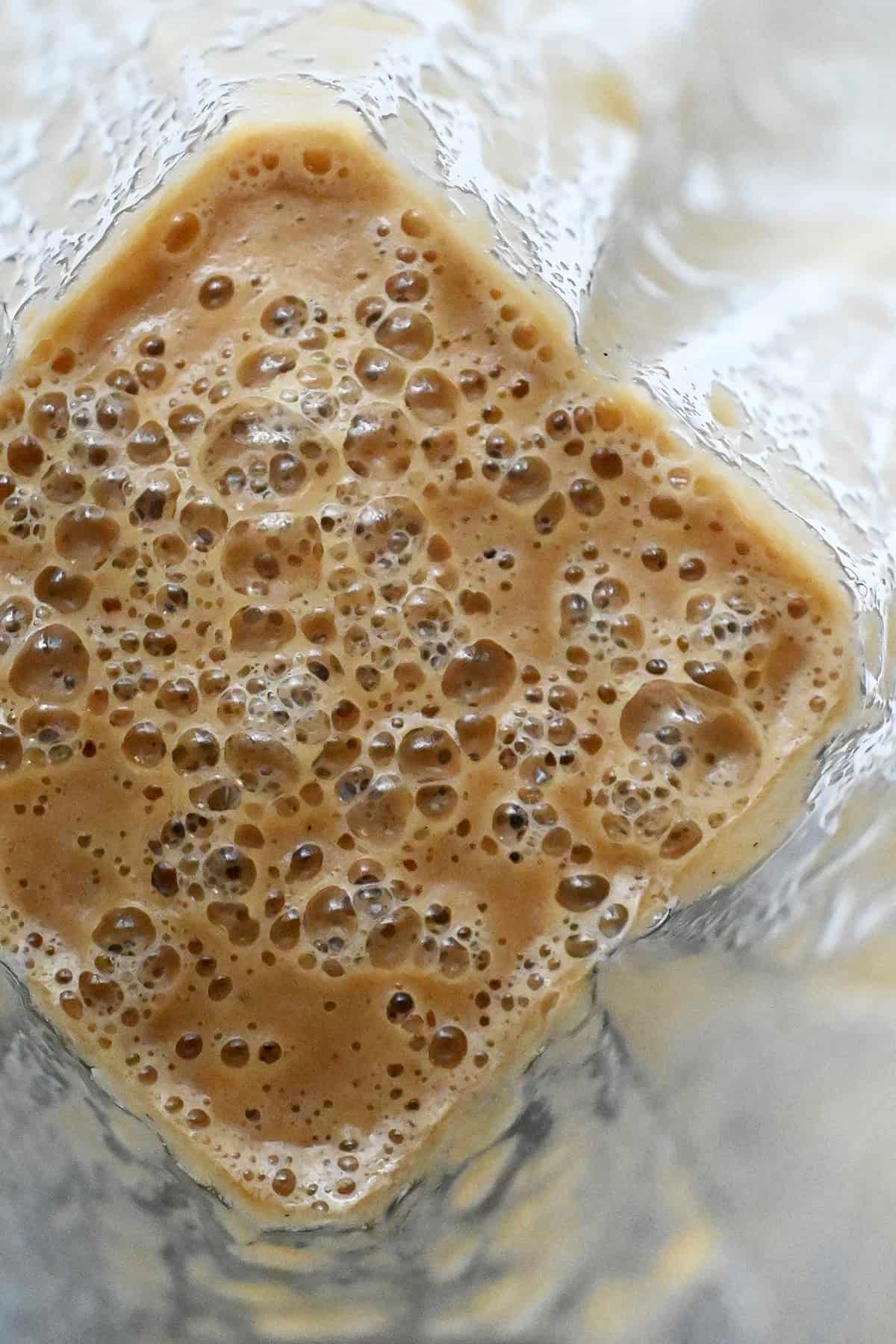
Marinate the beef
Place the thinly sliced steak in a large bowl and pour in the marinade and sesame oil. Toss well to combine.
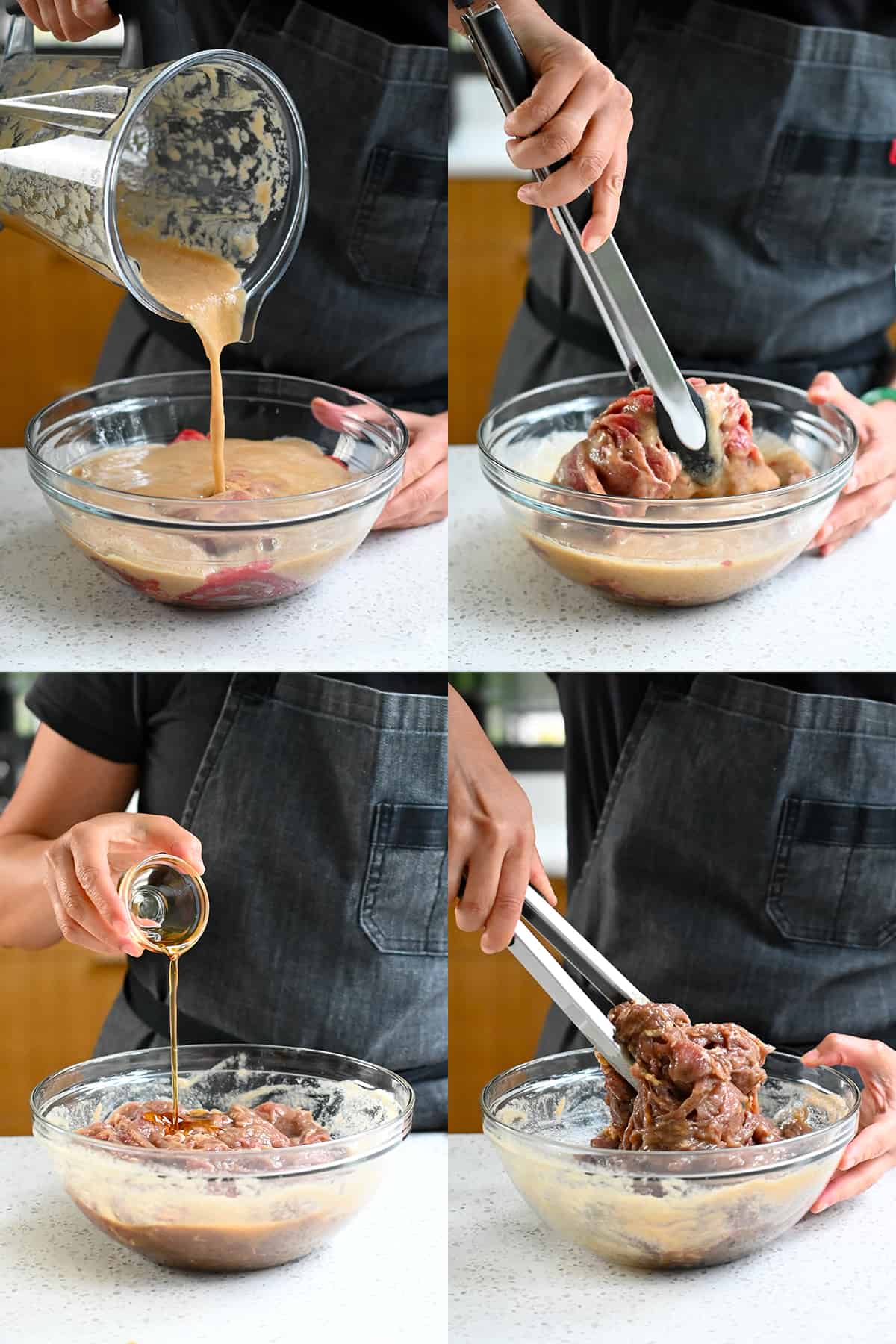
Cover the bowl and marinate in the refrigerator for at least 1 hour and up to 24 hours.
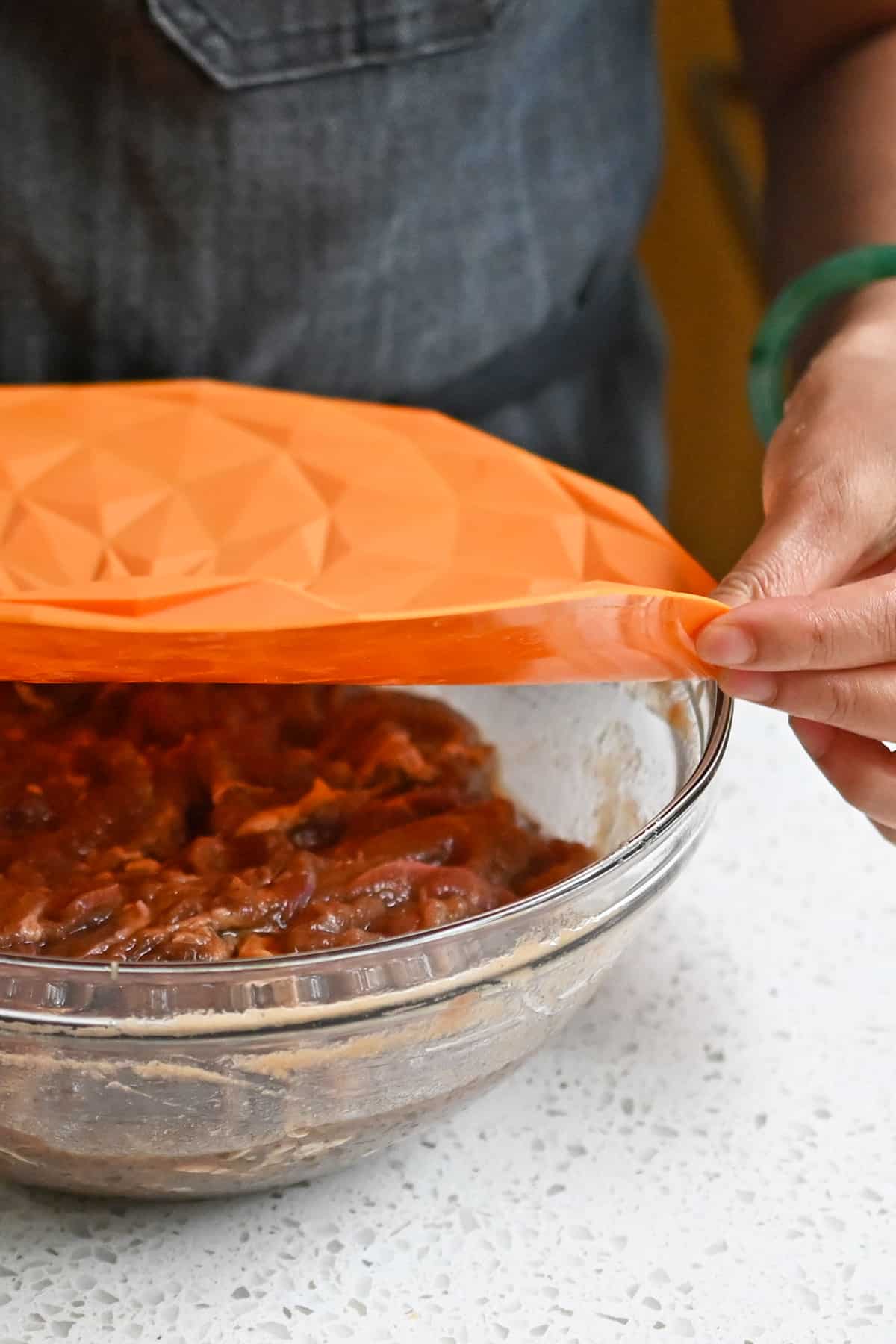
Cook the Korean beef bulgogi
Heat a large skillet over medium high heat. When it’s hot, swirl in 1 tablespoon of the oil. Shake off the excess marinade and cook the marinated beef in a single layer in the hot pan. You’ll need to cook the meat in a few separate batches.
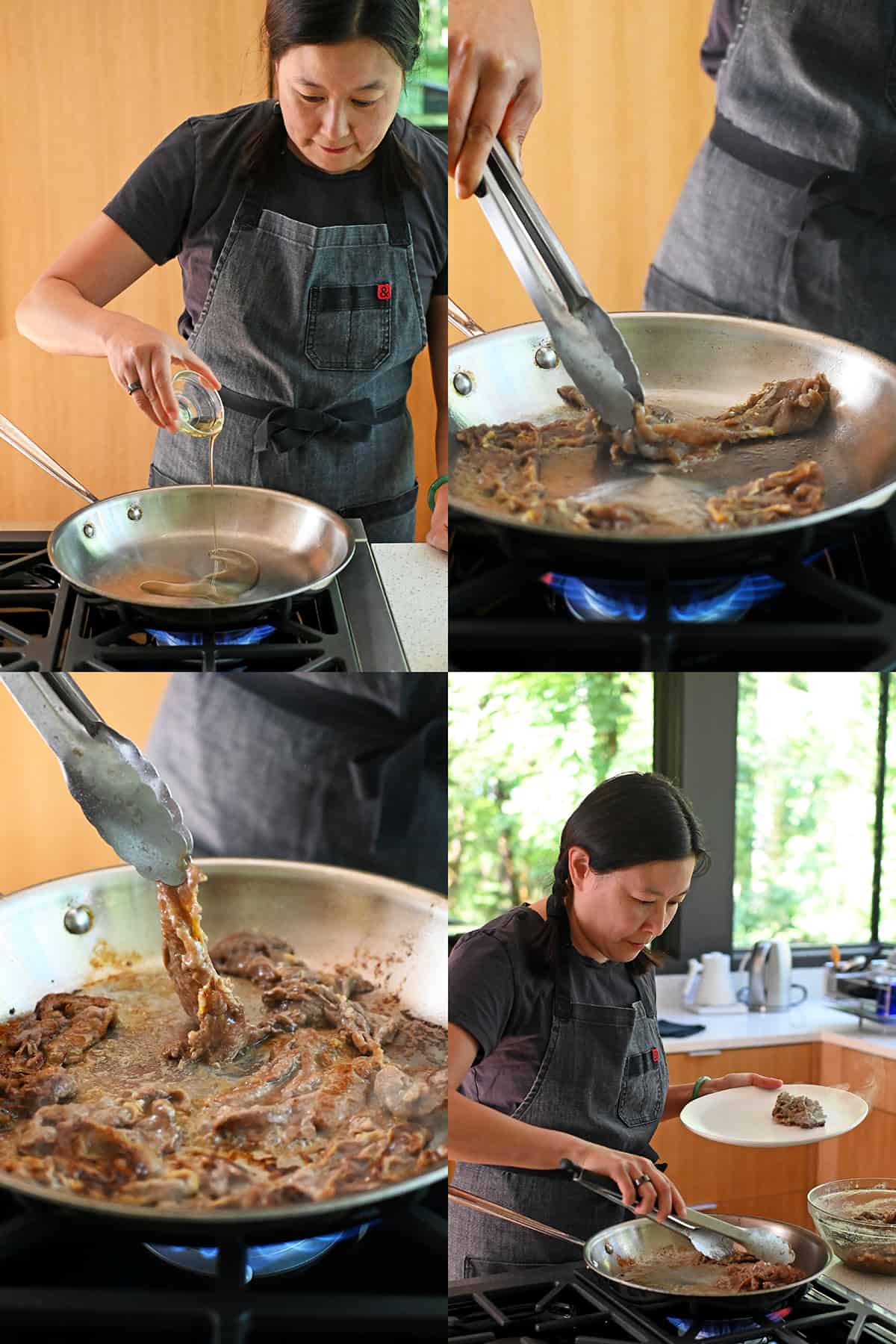
Cook the meat until lightly browned, about 2 minutes on each side depending on the thickness.
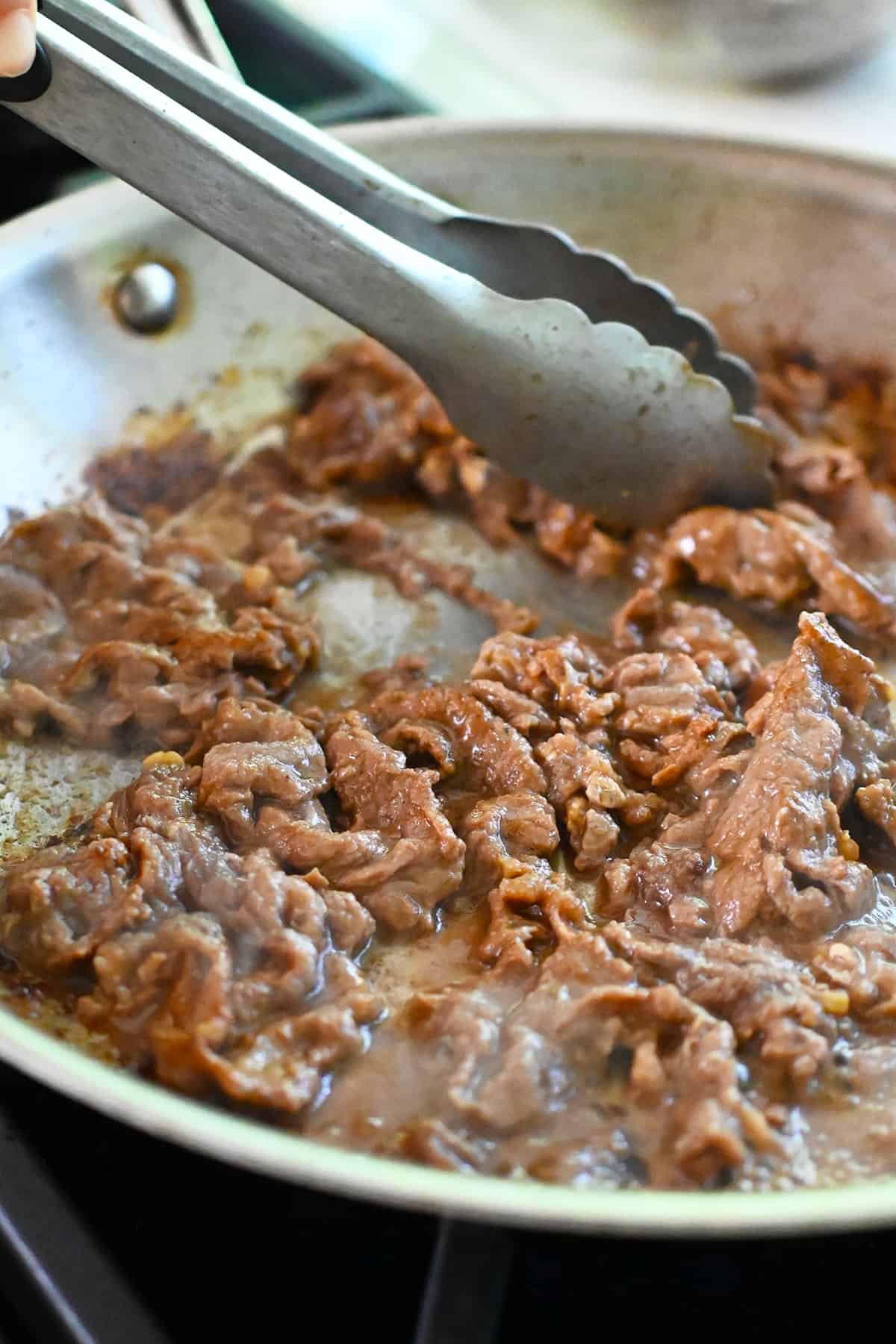
Transfer to a serving dish and repeat the process with the remaining beef.
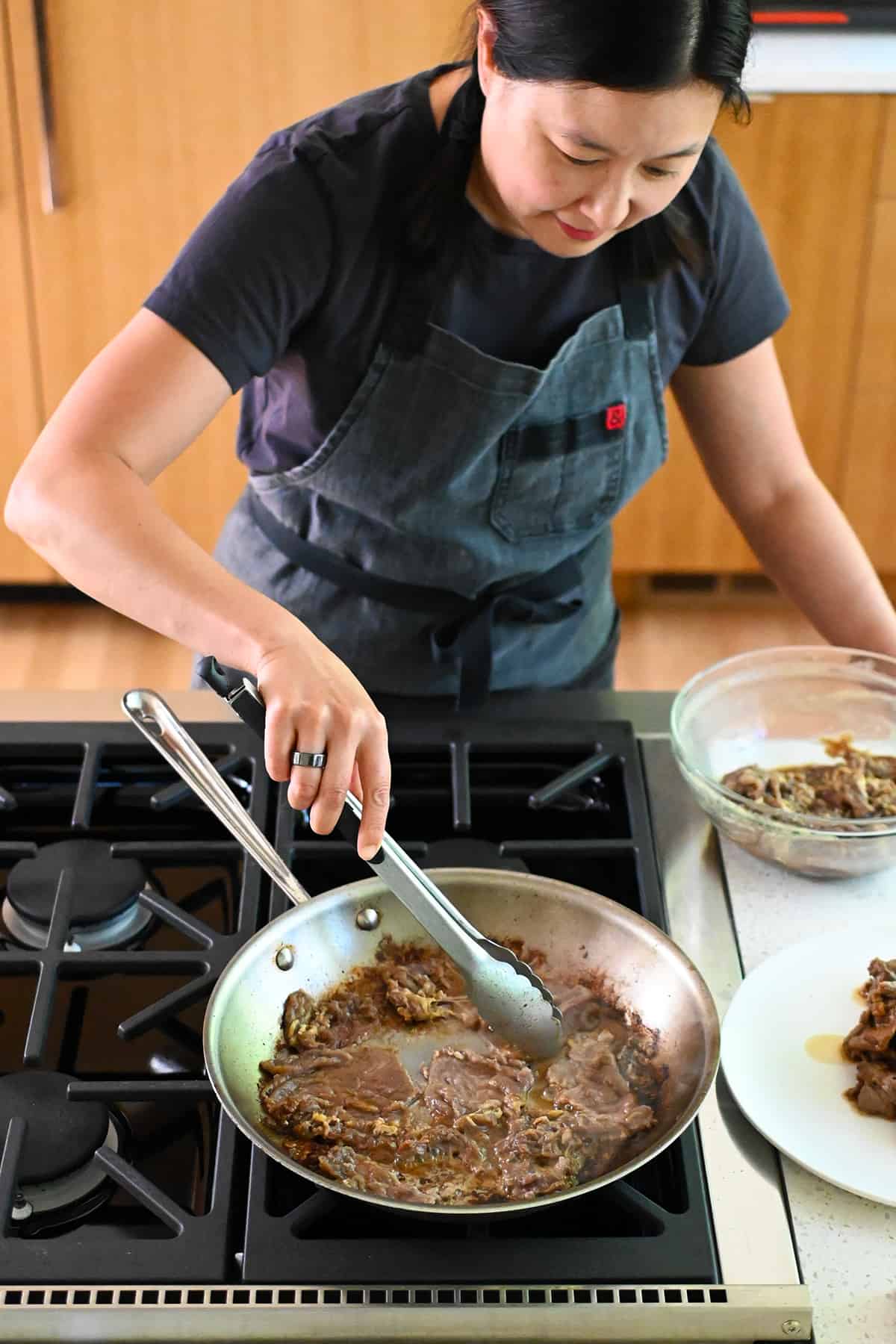
Sprinkle on the sesame seeds and sliced scallions before serving. Dig in!
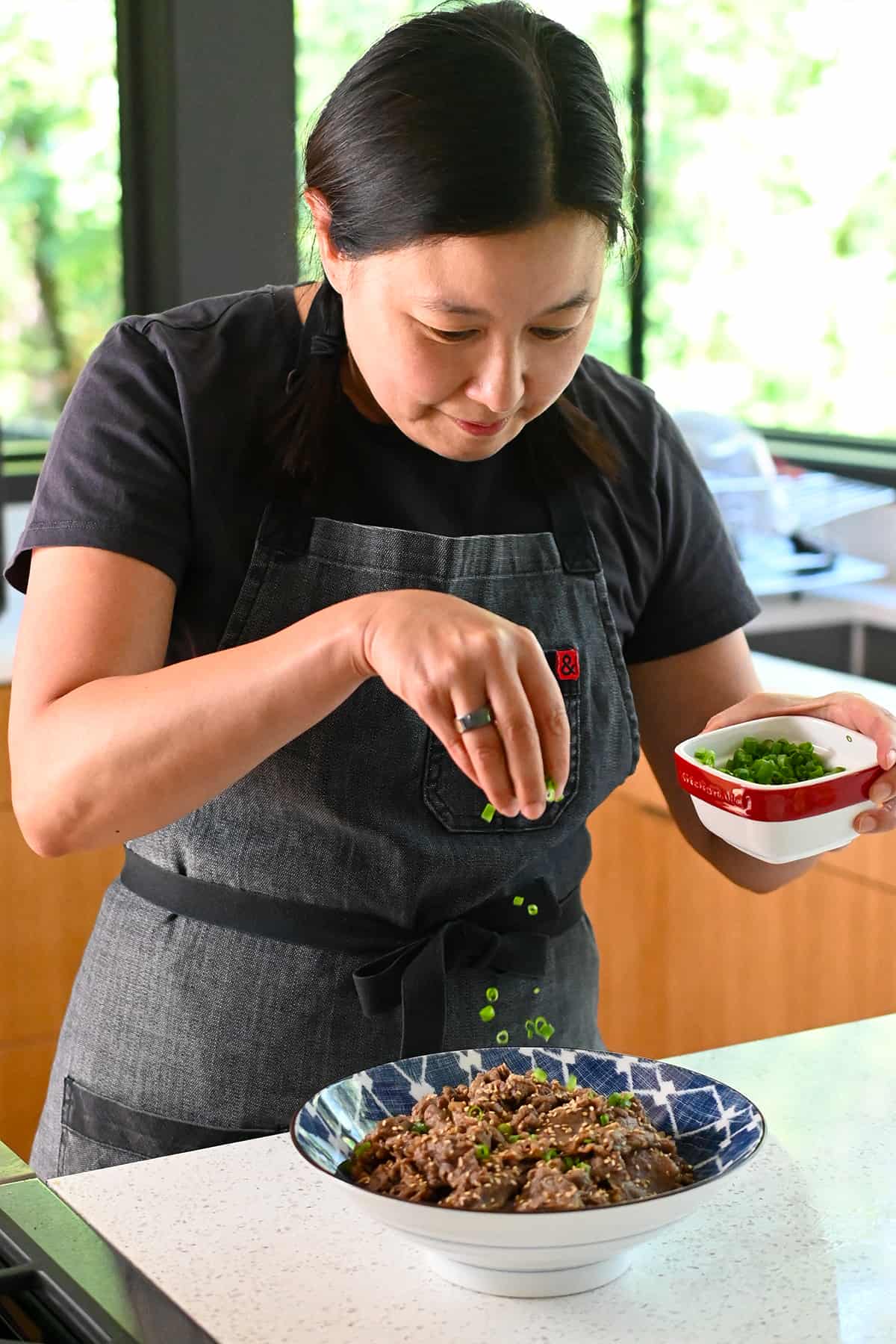
What can you serve with it?
To keep your meal low carb and Whole30, serve the bulgogi with cauliflower rice, lettuce leaves, and Korean side dishes (e.g. kimchi, Korean Cucumber Salad, or Korean spinach dish).
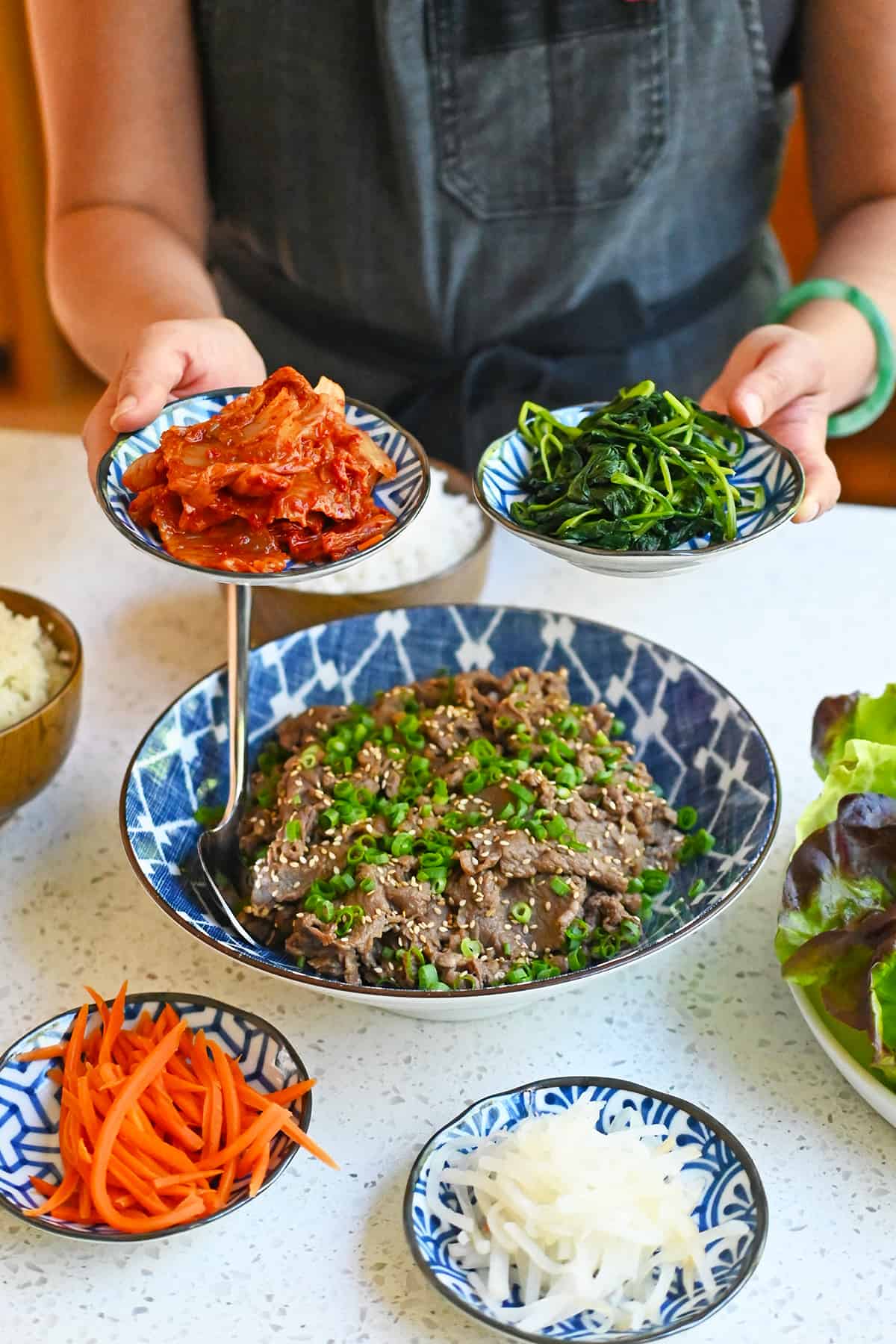
My favorite way to eat bulgogi is to wrap it up with my favorite banchan (especially kimchi) in butter lettuce leaves and chow down!
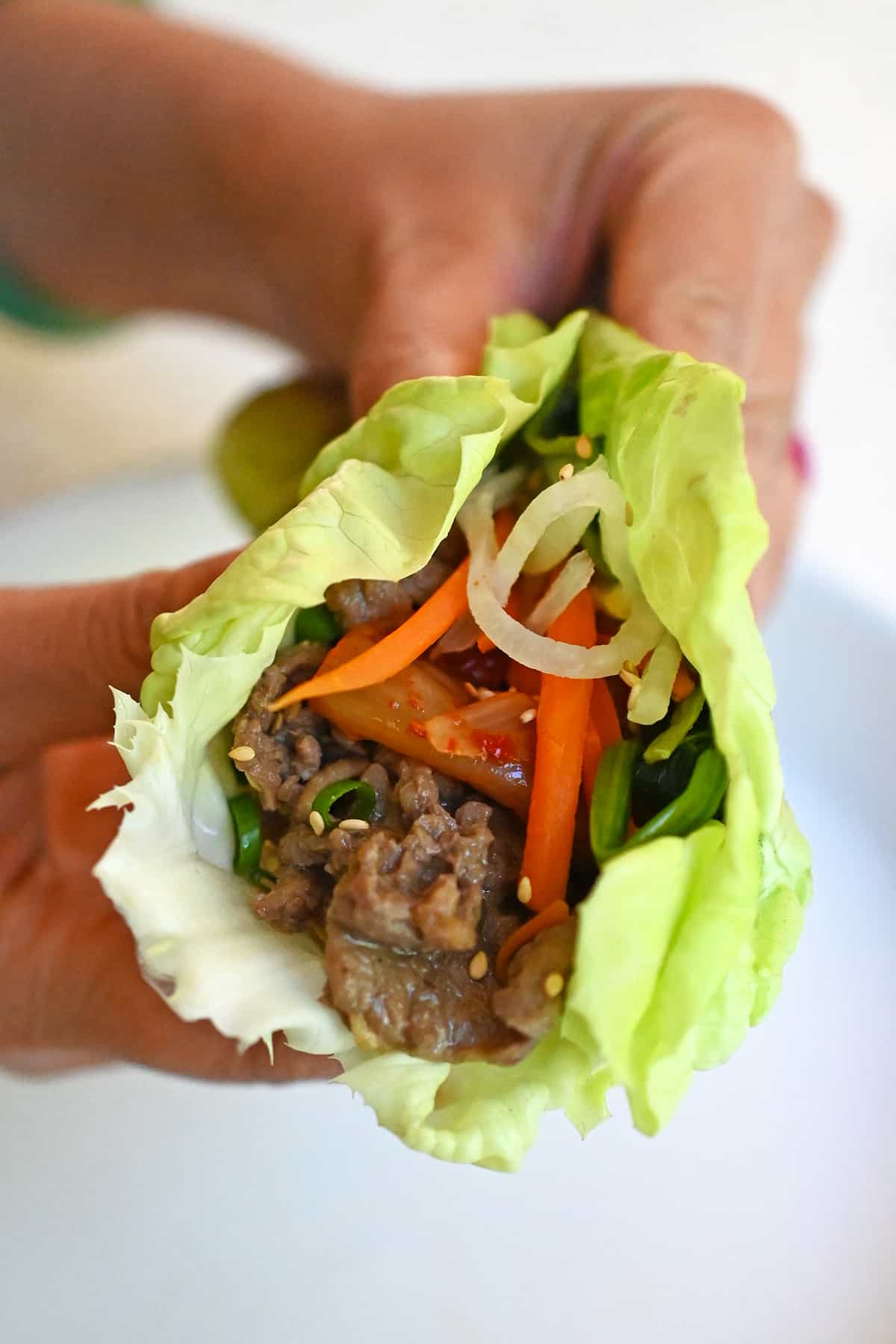
How do you save leftovers?
Leftovers can be stored in a sealed container in the fridge for up to 4 days or frozen for up to 3 months.
Can you use other meat besides beef to make bulgogi?
Sure! You can use sliced chicken or pork tenderloin to make bulgogi!
Looking for more recipe ideas? Head on over to my Recipe Index. You’ll also find exclusive recipes in my cookbooks, Nom Nom Paleo: Food for Humans (Andrews McMeel Publishing 2013), Ready or Not! (Andrews McMeel Publishing 2017), and Nom Nom Paleo: Let’s Go! (Andrews McMeel Publishing 2022)
Bulgogi (Paleo, Whole30, Gluten Free)
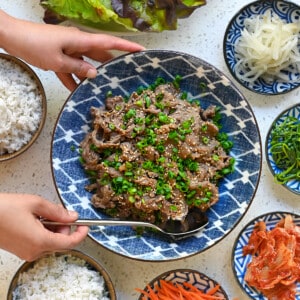
Ingredients
- 1 medium Asian pear, peeled, cored, and roughly chopped (about 8 oz)
- ½ medium onion, roughly chopped
- 8 garlic cloves, peeled
- 2 inch piece fresh ginger, peeled, roughly chopped
- ⅓ cup coconut aminos
- Diamond Crystal kosher salt
- ¼ teaspoon freshly ground black pepper
- 1½ pounds thinly sliced steak
- 2 teaspoons toasted sesame oil
- 2 tablespoons avocado oil, divided
- 1 tablespoon toasted sesame seeds
- 2 green onions, thinly sliced
Instructions
Make the marinade
- In a high speed blender, add the Asian pear, chopped onion, garlic, ginger, coconut aminos, 1½ teaspoons of Diamond Crystal kosher salt, and black pepper. Blitz until smooth.
Marinate the beef
- Place the thinly sliced steak in a large bowl and pour in the marinade and sesame oil. Toss well to combine.
- Cover the bowl and marinate in the refrigerator for at least 1 hour and up to 24 hours.
Cook the bulgogi
- Heat a large skillet over medium high heat. When it’s hot, swirl in 1 tablespoon of the oil. Shake off the excess marinade and cook the marinated beef in a single layer in the hot pan. You’ll need to cook the meat in a few separate batches.
- Cook the meat until lightly browned, about 2 minutes on each side depending on the thickness.
- Transfer to a serving dish and repeat the process with the remaining beef. Sprinkle on the sesame seeds and sliced scallions before serving. Dig in!
Video
Notes
- Leftovers can be stored in a sealed container in the fridge for up to 4 days or frozen for up to 3 months.
- To keep your meal low carb and Whole30, serve the bulgogi with cauliflower rice, lettuce leaves, and Korean side dishes (e.g. kimchi, Korean Cucumber Salad, or Korean spinach dish).
- Can’t find an Asian pear? You can use a regular pear or even a kiwi. Fuji apple is also a fine option for the marinade.
Nutrition
Nutrition information is automatically calculated, so should only be used as an approximation.

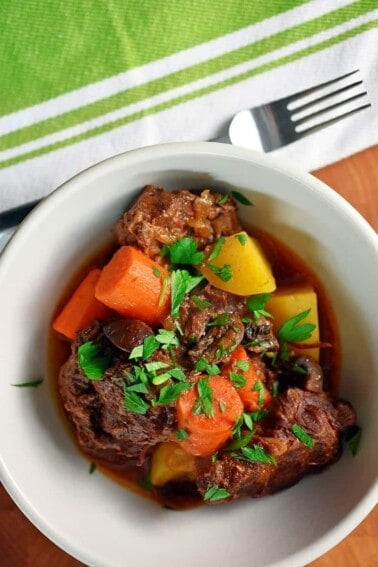
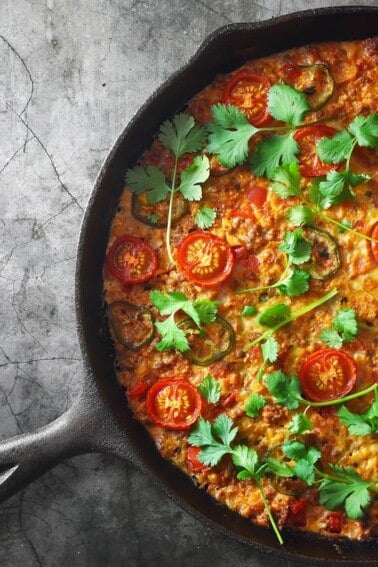
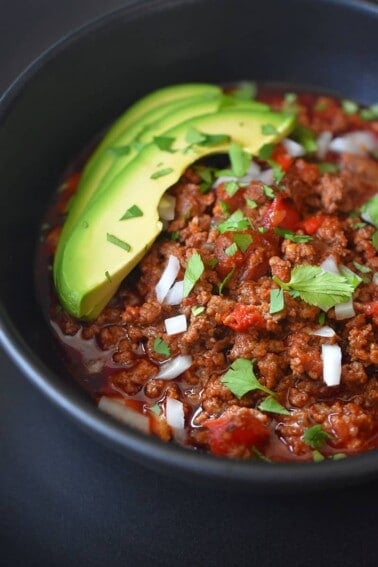
excited to try this! Do you have a recommendation of which type of steak?
Have you seen the thin sliced beef at Costco? If so, what do you think of the thickness/thinness of that for this recipe? Not near a Korean/Asian market store here in up state Minnesota.
Thanks. I love your recipes.
I have not, but you can use thinly slice ribeye, tenderloin, sirloin, or flank steak.
I LOVE bulgogi!! Growing up with a friend whose mother was Korean, that was a treat that I would always ask her mom to make when I would go over to stay the night! That, and kimchi!!! Of course, being from Korea, it was the “real deal,” homemade goodness! As I no longer eat “beef,” is it possible to substitute pork for this dish? And would you need to correct any other ingredient as a result? I don’t eat a lot of pork anymore either, but I will substitute it for beef with any dish that would call for it.
I LOVE your website and all of your amazing recipes! Thank you so much for sharing your tasty talent with us all! 🙂
Hi Felicia. Thank you! Yes, you can use thinly sliced pork tenderloin in place of the beef.
Looks tasty and easy to make!
Looks amazing! Does it freeze well?
Yes, you can store in the freezer for up to 3 months. Just thaw and reheat.
one of my favorite dishes. thank you!